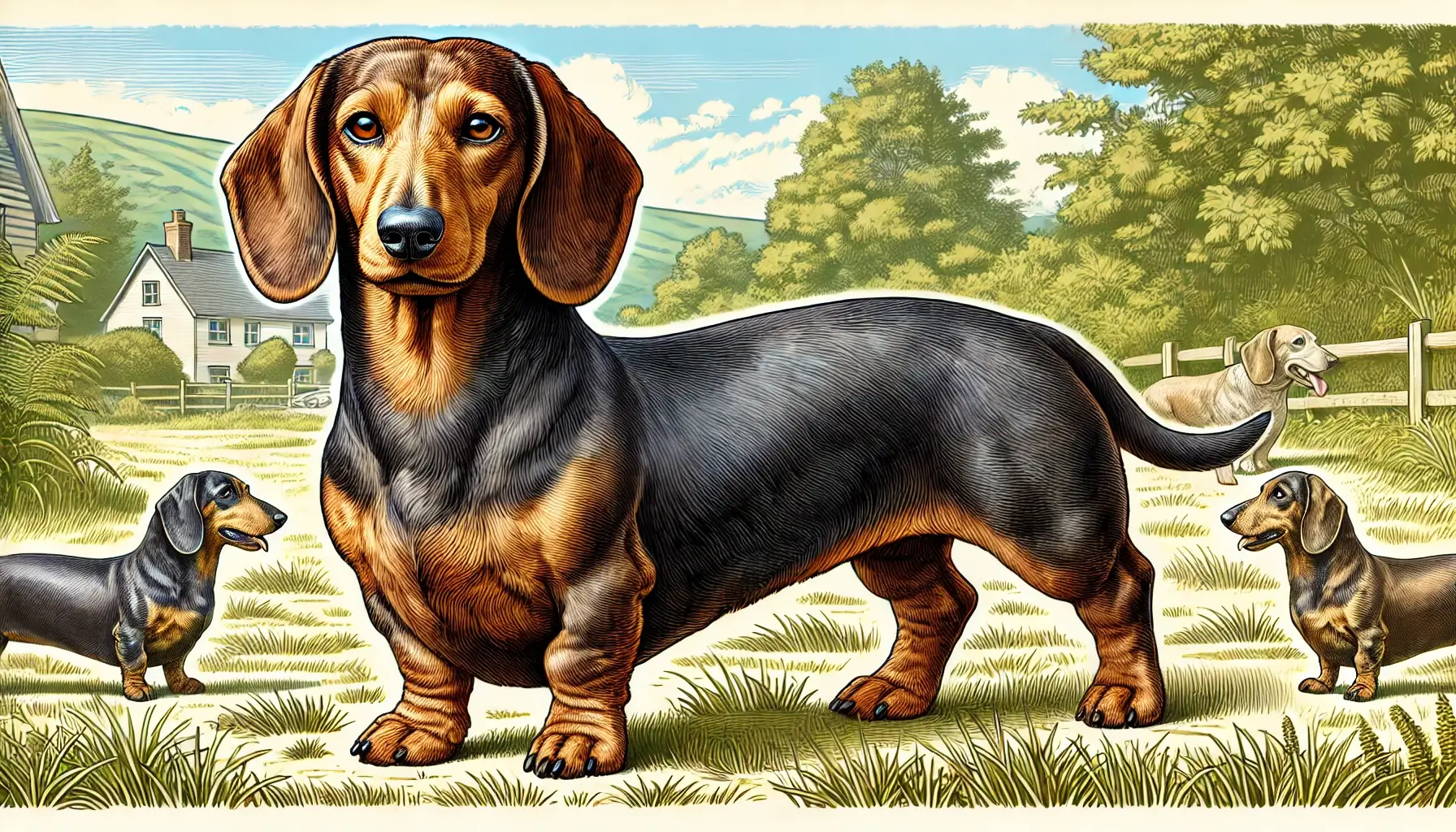
Why Are Dachshunds So Long? A Vet’s Science-Backed Explanation
The long and elongated Dachshund bodies are affectionately referred to as “weiner dogs,” and their quirky nature is what makes people love them even more.
But Why Are Dachshunds So Long? This is a question asked by many people and the answer is not simple. To answer this, we have to study their genetics, and today, we are going to get some help from one of my friends who’s a Vet by profession.
All of my articles are reviewed by one vet or another, and this article is co-written by him and me. We will uncover the evolutionary and genetic factors that shaped this iconic breed, explaining how their body structure serves more than just a cute look. Let’s get started without further ado.
The History of the Long Dachshund Body
The name “Dachshund” comes from the German words Dachs (badger) and Hund (dog), signifying their primary purpose as badger hunters.
Hunting badgers required dogs that could crawl into tight, narrow spaces. So, breeders decided to create a dog with a long, low body and short legs, perfect for fitting into burrows, tunnels, and even hollow trees.
This unique build made Dachshunds the ideal hunting companions for getting into spots where other dogs couldn’t reach.
Genetics and the Role of Cartilage
Now, this section is contributed by my Vet friend, and he would love to have a chat with you guys speaking and explaining the science behind their long bodies.
He’ll explain how genetics play a key role in shaping their unique appearance, particularly focusing on cartilage development and its influence on their body structure.
The Genetic Mutation (FGF4 Gene) Responsible for Chondrodysplasia
The distinctive short legs of Dachshunds are the result of a genetic mutation known as chondrodysplasia, which is caused by the FGF4 gene.
This gene mutation affects the growth of cartilage, leading to shorter limbs, a condition referred to as dwarfism in dogs.
In the case of Dachshunds, the FGF4 gene is what gives them their characteristic stumpy legs. This mutation specifically impacts the development of the long bones in their legs, halting growth earlier than usual, resulting in their iconic short stature.
How This Genetic Trait Leads to Their Distinctive Long Body and Short Legs?
Because of the FGF4 gene mutation, the growth of Dachshunds’ limbs is limited, while their spinal column remains relatively long.
This combination of shortened legs and an elongated spine creates the unique body shape that makes Dachshunds so easily recognizable. Their long bodies and short legs are ideal for burrowing into tunnels, as originally intended by breeders.
The short limbs help them stay low to the ground, while the long back gives them the flexibility needed to maneuver through narrow spaces.
Dachshunds’ Long Bone Structure and Health Considerations
The FGF4 gene mutation gives Dachshunds their distinct look, but it also has some drawbacks. The elongated spine and short legs can put extra pressure on their vertebrae, making them prone to a lot of spinal issues. Some of these include:
1. Intervertebral Disc Disease (IVDD)
IVDD is the most common spinal issue in Dachshunds, caused by the pressure placed on their long spine due to their short legs and elongated body.
The discs between the vertebrae can herniate or rupture, leading to pain, loss of mobility, and even paralysis if not treated. Dachshunds are especially prone to IVDD, and jumping from heights can increase the risk.
2. Hip Dysplasia
While more common in larger breeds, Dachshunds can also suffer from hip dysplasia, a condition where the hip joint doesn’t develop properly.
This can lead to arthritis and chronic pain over time, limiting mobility. Though less common due to their size, the pressure on their joints from their elongated bodies can exacerbate this condition in later life.
3. Patellar Luxation
Patellar luxation occurs when the kneecap (patella) slips out of its normal position. Dachshunds’ short legs and unique structure can make them prone to this issue, which can cause limping, skipping steps, or even pain during movement. In severe cases, surgery may be required to correct the misalignment of the kneecap.
4. Obesity-Related Joint Stress
Dachshunds are prone to obesity, and extra weight can exacerbate joint issues. Obesity increases the strain on their already vulnerable spine and limbs, leading to arthritis, joint pain, and a higher risk of IVDD. Maintaining a healthy weight through proper diet and exercise is crucial to preventing these health issues.
Frequently Asked Questions (FAQs)
How Did Dachshunds Become So Long?
Dachshunds were selectively bred to have long bodies and short legs to help them burrow into narrow tunnels while hunting small animals like badgers.
Why Are Dachshunds Shaped The Way They Are?
Their unique shape, with a long body and short legs, was designed to make them effective hunters, especially for navigating underground burrows and tight spaces.
Why Are Dachshund Backs So Long?
Dachshunds have long backs due to a genetic mutation (FGF4 gene) that causes chondrodysplasia, resulting in shortened limbs but a normal-length spine.
Why Do Dachshunds Have Such Big Feet?
Dachshunds have large, paddle-shaped feet to help them dig efficiently when burrowing into tunnels in search of prey.
Conclusion: Why Are Dachshunds So Long?
Dachshunds are long because they were purposefully bred to be exceptional hunters, particularly for burrowing animals like badgers.
Their elongated bodies and short legs gave them the ability to fit into tight spaces and navigate through tunnels with ease.
Over time, their unique look has become a defining feature, beloved by doxie lovers worldwide. But if we step back, we could also see their long bodies as a metaphor for persistence.
Just like their physical ability to dig deeper and further into challenging spaces, Dachshunds reminds us to keep going, even when the path seems narrow, to achieve what we’re built for.




